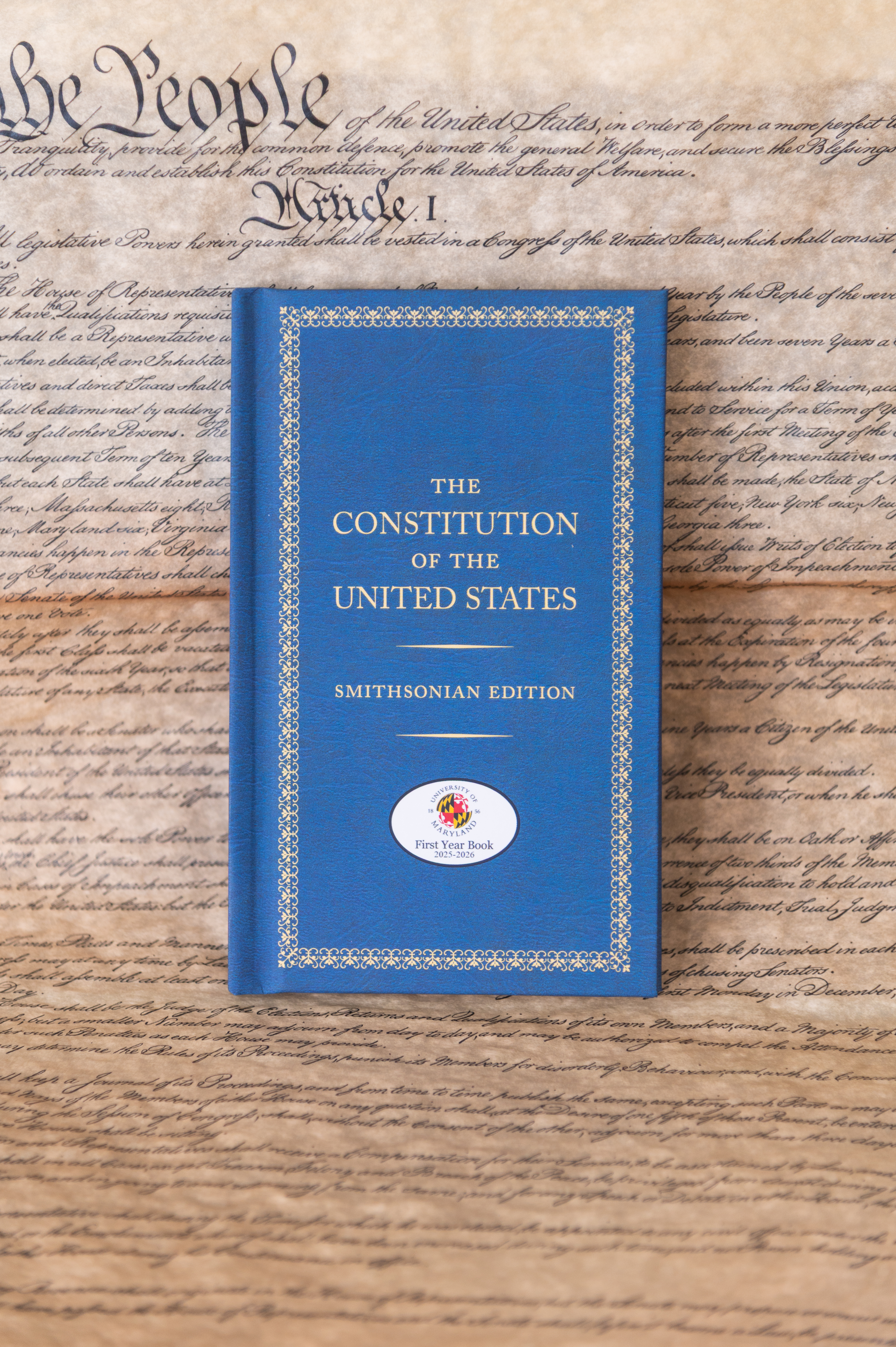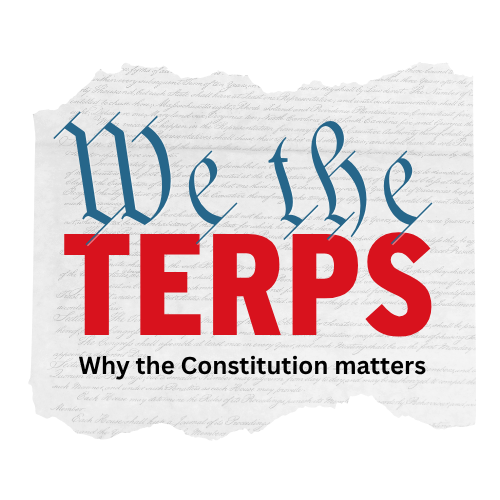About the book
"What do the rights to free speech and peaceful assembly permit? What responsbilities do the different branches of government bear? These questions, which are critical to understanding fundamental issues in today's world, impact each one of us."
We are excited to introduce you to one of our most meaningful campus traditions—the First Year Book program.
Each year since 1993, the University of Maryland has invited all first-year students to read and engage with a work that sparks thoughtful conversation, explores big questions, and connects ideas across disciplines.
This year’s selection is a foundational one: the Constitution of the United States. As the nation prepares to mark the 250th anniversary of the Declaration of Independence, this historic text has never been more relevant.
By looking closely at the U.S. Constitution, our community can explore questions pertinent to contemporary life. What do the rights to free speech and peaceful assembly permit? Are there limits on the application of due process? What responsibilities do the different branches of government bear? These questions, which are critical to understanding fundamental issues in today’s world, impact each one of us.
The First Year Book program aims to create a shared intellectual experience for the campus, empowering students to think critically and debate respectfully as we address the grand challenges of our time. Exploring the Constitution allows our community to engage in meaningful discussion across disciplines, to analyze government actions and policy choices, and to derive meaning from the laws that govern us.
We hope you will join classroom discussions, campus events, and community conversations about our nation’s legal framework. As we consider the meaning of justice, equality, and liberty, please ask questions and be open to perspectives that challenge your own. It’s how we move fearlessly forward—together.
Sincerely,
Jennifer King Rice
Senior Vice President Associate Provost
William A. Cohen
and Provost and Dean for Undergraduate Studies

Read Maryland Today article: "A Foundational First Year Book"
Join the conversation.
Why does the Constitution matter to you?
Learn more about civic engagement at:

What should we read next?
Nominations are accepted through Oct. 14.
Meet the First Year Book Committee for Academic Year 2025-2026
The First Year Book is chosen by a committee of University of Maryland faculty, staff, and students representing 10+ disciplines.
- Sai Harshini Badugu – Undergraduate Student
- Kelly Biglin – Student
- James Butler – Associate Professor, Behavioral and Community Health Department of Behavioral and Community Health
- Lawrence Clark – Associate Professor and Associate Dean, Undergraduate Studies
- Leeanne Dunsmore – Director of Strategic Initiatives, Undergraduate Studies
- Virginia Haufler – Associate Professor, Government & Politics
- Katherine Joshi – Senior Lecturer, English
- Lisa Kiely – Associate Dean, Undergraduate Studies and Ombudsperson
- Marilee Lindemann – Associate Professor and Executive Director, College Park Scholars
- Elisabeth Fost Maring – Clinical Professor, Department of Family Science
- Chinaza Ofor – Undergraduate Student
- Julie Park – Associate Professor, Sociology
- Korey Rothman – Program Director, College Park Scholars Civic Engagement for Social Good
- Stephanie Anne Zager – Graduate Assistant, Undergraduate Studies

